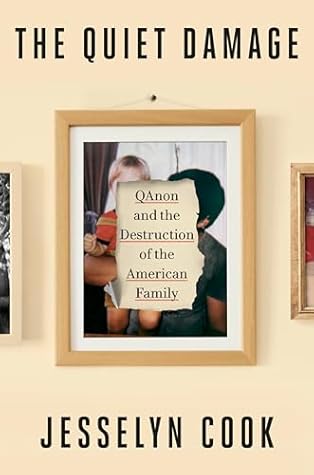More on this book
Community
Kindle Notes & Highlights
Read between
August 22 - September 4, 2024
Matt was reminded of collaborative, quest-driven video games he’d played with strangers online. Only here, the objective wasn’t hunting down monsters or fictitious beasts—it was saving humanity. Whether it was fantasy or reality had yet to be seen. If QAnon was a game, Matt was ready to play. In his mind, he was embarking on a journey that could change the course of history.
Nita suggested, that Fox News, and now QAnon, supplied Emily with external grievances through which to channel her internal anger and sadness.
This trust was a product of parasocial attachment, a one-sided, illusory relationship in which an audience member comes to think of a public persona, whom they’ve observed from afar for a long time, as a friend.
It was those people, the believers-turned-opportunists, who seemed the most compelling—and the most dangerous.
“I just can’t believe it,” she’d say again and again, shaking her head while watching his videos. But she did. She appeared to believe it all,
What had felt to Matt like an epiphany, however, was in fact an apophany: a Rorschachian conclusion drawn from dots that have no business being connected. Apophenia is a natural phenomenon; the human brain is hardwired to scan for patterns, even where they don’t exist. It’s also a bedrock of conspiracy theory thinking, wherein illusory patterns perceived in random noise are held up as evidence of nefarious activity.
tale of a biblical battle between good and evil that was prophesied to culminate in an apocalyptic day of reckoning. A mission to save the children, drive out satanism, and restore traditional values to society. A path to self-actualization. As he leaned deeper into QAnon dogma, decoders became clergy interpreting the teachings of their deities, Q and Trump. Q Drops, often steeped in scripture, became sacred texts bearing hidden truths. To be a disciple wasn’t only about worship or evangelism—it was an invitation to the battlefield.
Religious belief was significantly positively correlated with conspiracy theory belief, attributed by experts to the service of common psychological needs (certainty, purpose, community) and shared underlying elements (grand narratives, a righteous mission, conviction in the unseen). And while believers of QAnon theories represented only a small minority of Christians overall, they accounted for nearly one in four white Evangelicals; the majority, also, were supporters of Christian nationalism.
A moment of raw human connection had just accomplished for Matt what no amount of fact-checking or debunking ever could: It started to shake his faith in the lies he’d been sold.
They saw him for exactly who he was, at his best, his worst, and every state in between. That was among the sweetest blisses of having loved each other for nearly two-thirds of their lives: feeling wholly seen and wholly accepted.
It was Christian nationalism: a theocratic ideology rejected by many mainstream Christians as a perversion of their faith and a cover for white supremacy.
Rapacious peddlers of unevidenced conspiracy theories could easily go viral on Facebook, YouTube, TikTok, and Twitter, even outperforming major news outlets in their vast, rapid reach, as we’d seen with Plandemic. The problem was clear, and so too appeared the fix.
In theory, the scales had to be tilted back. In practice, that meant doing things like reining in Big Tech, teaching media literacy to help people parse real from fake, and countering false information with fact-checking labels.
It would seem entirely logical to fight fiction with fact. But therein lies a fraught assumption. Beneath these kinds of delusional beliefs, in many instances, is not a desire to be accurately informed, but a need to be internally comforted.
In QAnon, the lonely found belonging, the aimless found direction, and the hurt and the angry found validation.
The truth is that the truth is almost beside the point. Facts alone won’t fix this; to get bogged down in debunking falsehoods is to tackle the symptom, not the cause. What we’re facing is as much a wellness crisis as it is a disinformation crisis. Our interventions need to reflect that.
She’d found that people with a weaker ability to “bounce back” from adversity were more susceptible, supporting her understanding that conspiracy theories were, for many, a coping mechanism—a more easily accessible and ostensibly less harmful one than others, like drugs or gambling.
A key issue underlying our collective vulnerability is mental-emotional health. America, by that measure, is seriously unwell.


